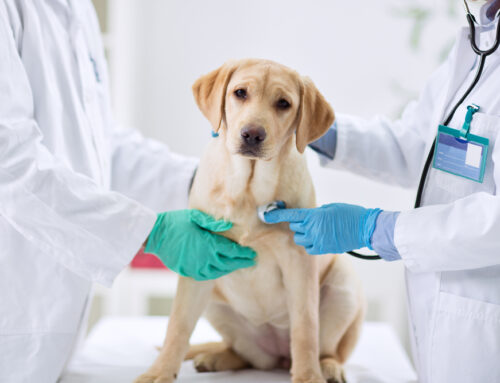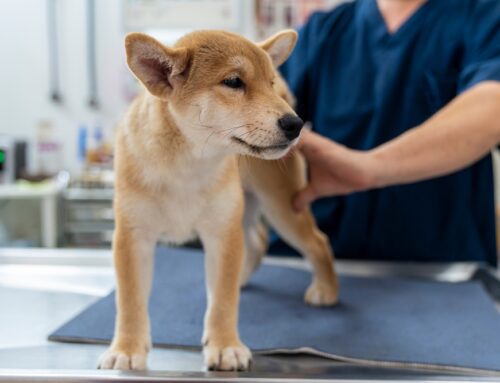Emergency Action Plan: What to Do If Your Dog Has Bloat
Bloat in dogs is a serious and potentially fatal condition that every pet owner in Granada Hills should be aware of. At Mission Veterinary Clinic, we are committed to educating pet owners about this life-threatening emergency and providing expert care to prevent and treat it effectively. Here’s what you need to know about bloat, including its causes, symptoms, treatment, and preventative measures.
What is Bloat in Dogs?
Bloat, or Gastric Dilatation-Volvulus (GDV), occurs when a dog’s stomach fills with gas, fluid, or food and then twists on itself, blocking both entry and exit points. This twisting cuts off blood supply, leading to shock, tissue death, and toxin release. Without immediate treatment, bloat can be fatal within hours.
The condition progresses rapidly, affecting circulation to vital organs, including the heart and spleen. If left untreated, necrosis (tissue death) can develop, worsening the dog’s prognosis.
Learn more about Gastric Dilatation-Volvulus in Small Animals – ACVS
Recognizing the Signs of Bloat
Early detection of bloat can save your dog’s life. Watch for these critical symptoms:
- Swollen or distended abdomen
- Restlessness or pacing
- Unsuccessful attempts to vomit (dry heaving)
- Rapid breathing and panting
- Pale gums or signs of shock
- Collapse or sudden weakness
As bloat worsens, dogs may experience increased heart rate, excessive drooling, and extreme discomfort. If you notice any of these signs, seek emergency veterinary care immediately.
Understand more about the Signs of Bloat in Dogs – AKCCHF
Risk Factors Associated with Bloat
Certain factors increase a dog’s risk of developing bloat. The most common include:
- Breed: Large, deep-chested breeds (e.g., Great Danes, German Shepherds, Standard Poodles) are at higher risk.
- Eating Habits: Dogs that eat rapidly or consume one large meal per day are more susceptible.
- Exercise After Meals: Vigorous activity right after eating may contribute to stomach torsion.
- Genetics: If a close relative has had bloat, the dog may be predisposed.
- Stress & Anxiety: High-stress levels can trigger physiological changes that increase bloat risk.
Explore Breed-Specific Health Risks – Pawlicy Dictionary
Preventative Measures to Protect Your Dog
Preventing bloat involves simple yet effective strategies:
- Feed Multiple Small Meals: Instead of one large meal, provide several smaller meals throughout the day.
- Use Slow Feeders: Special feeding bowls or puzzle feeders help prevent rapid eating.
- Monitor Post-Meal Activity: Avoid exercise for at least an hour after eating. Light walks can help with digestion.
- Reduce Stress: Keep your dog’s environment calm, especially during meal times.
- Consider Prophylactic Gastropexy: For high-risk breeds, a preventive gastropexy surgery can secure the stomach and reduce the likelihood of twisting.
Visit Mission Veterinary Clinic Services for preventive care
Diagnosis and Treatment at Mission Veterinary Clinic
At Mission Veterinary Clinic, we use a comprehensive approach to diagnose and treat bloat quickly and effectively.
How Bloat is Diagnosed
- Physical Examination: Veterinarians assess abdominal swelling and pain.
- X-rays & Imaging: Identify stomach torsion and gas buildup.
- Blood Tests: Evaluate systemic impact, such as electrolyte imbalances and organ function.
Treatment Options
Bloat requires immediate medical intervention. Treatment typically includes:
- Stomach Decompression: Releasing trapped gas with a tube or needle.
- Intravenous (IV) Fluids: Preventing shock and stabilizing blood pressure.
- Emergency Surgery: If the stomach has twisted, a procedure is necessary to correct the torsion and prevent recurrence.
- Gastropexy Surgery: Secures the stomach in place to reduce the risk of future twisting.
The prognosis depends on how quickly the dog receives treatment. Delayed intervention increases the risk of complications, including heart arrhythmias, sepsis, and organ failure.
Frequently Asked Questions About Bloat in Dogs

What breeds are most at risk for bloat?
Large, deep-chested breeds, such as Great Danes, Dobermans, Boxers, and Weimaraners, have the highest risk.
Can bloat be cured without surgery?
If caught very early, stomach decompression may be possible. However, most cases require surgery to correct the twist and prevent recurrence.
How fast does bloat progress?
Bloat can become fatal within hours. Immediate veterinary attention is essential for survival.
How Mission Veterinary Clinic Helps Prevent and Treat Bloat
At Mission Veterinary Clinic, we provide expert care to protect dogs from bloat through:
- Preventive Care Programs – Including dietary counseling, stress reduction strategies, and breed-specific risk assessments.
- Emergency Services – With state-of-the-art equipment and an experienced veterinary team ready for urgent cases.
Explore our services at Mission Veterinary Clinic
How-To Guide: Reducing Your Dog’s Risk of Bloat
- Feed Multiple Small Meals: Avoid feeding one large meal per day.
- Use Slow Feeders: Slow down eating with puzzle feeders or specialized bowls.
- Monitor Post-Meal Activity: Avoid heavy exercise for at least an hour after meals.
- Routine Veterinary Check-Ups: Regularly assess your dog’s risk factors.
- Consider Prophylactic Surgery: Discuss gastropexy with your veterinarian, especially if your dog is a high-risk breed.
By staying informed and proactive, you can help prevent bloat and keep your dog healthy and happy. If you have concerns about your dog’s risk, contact Mission Veterinary Clinic today for expert guidance and care.










Leave A Comment